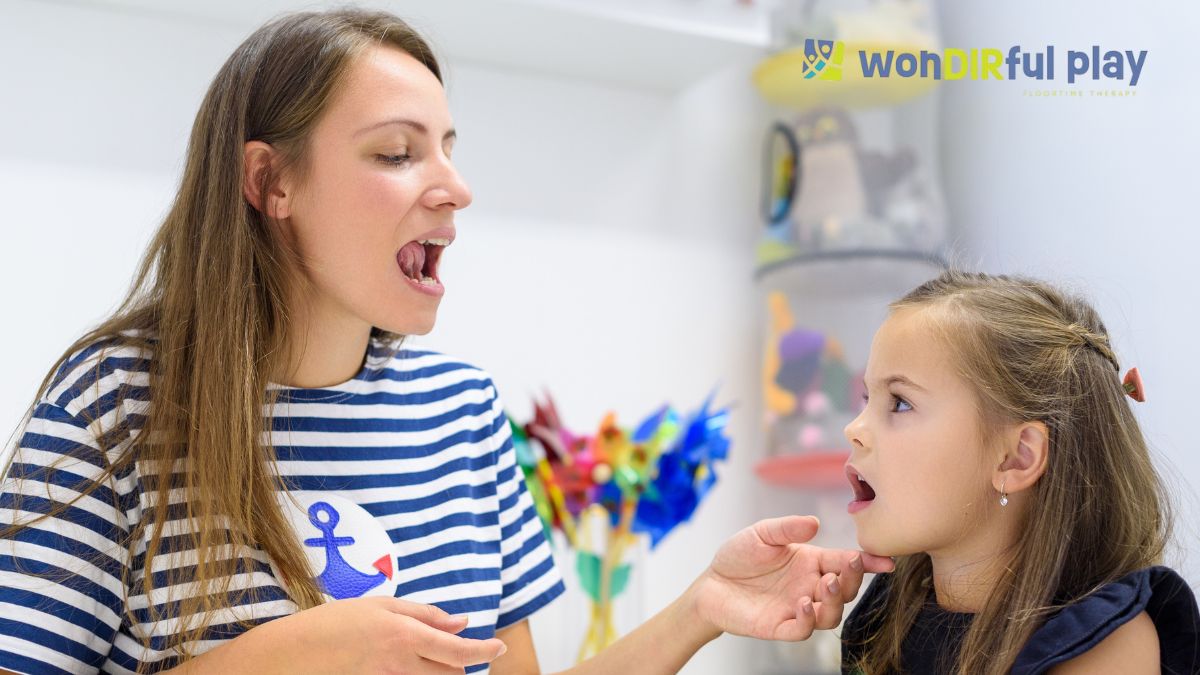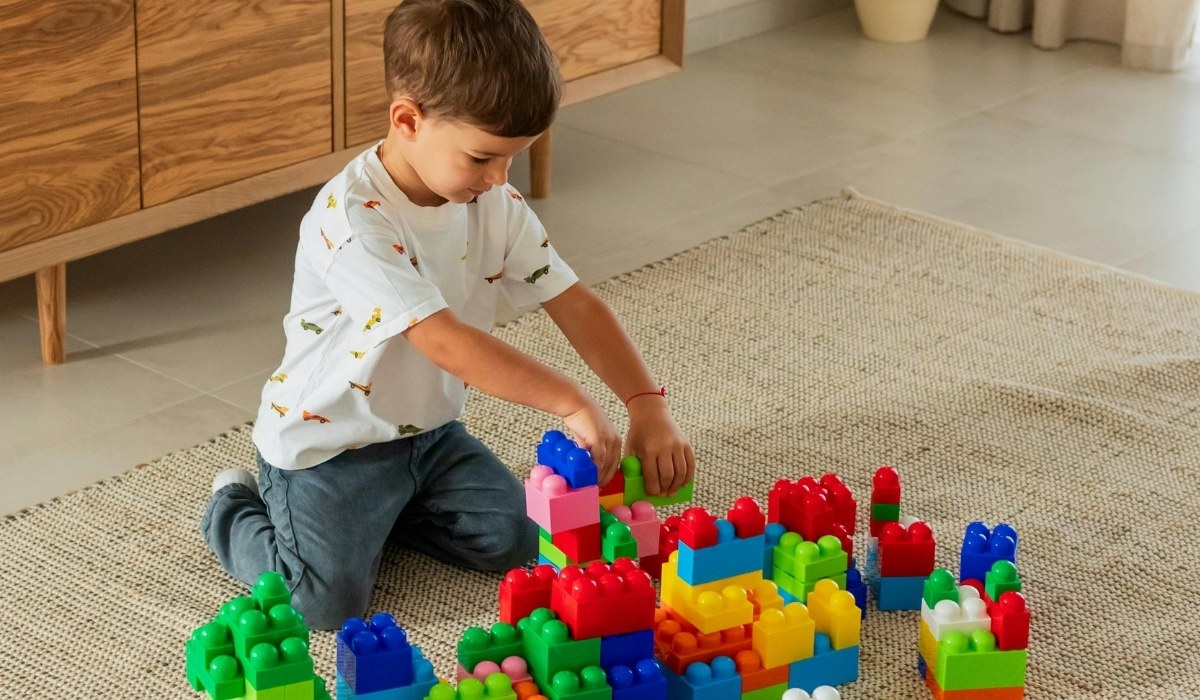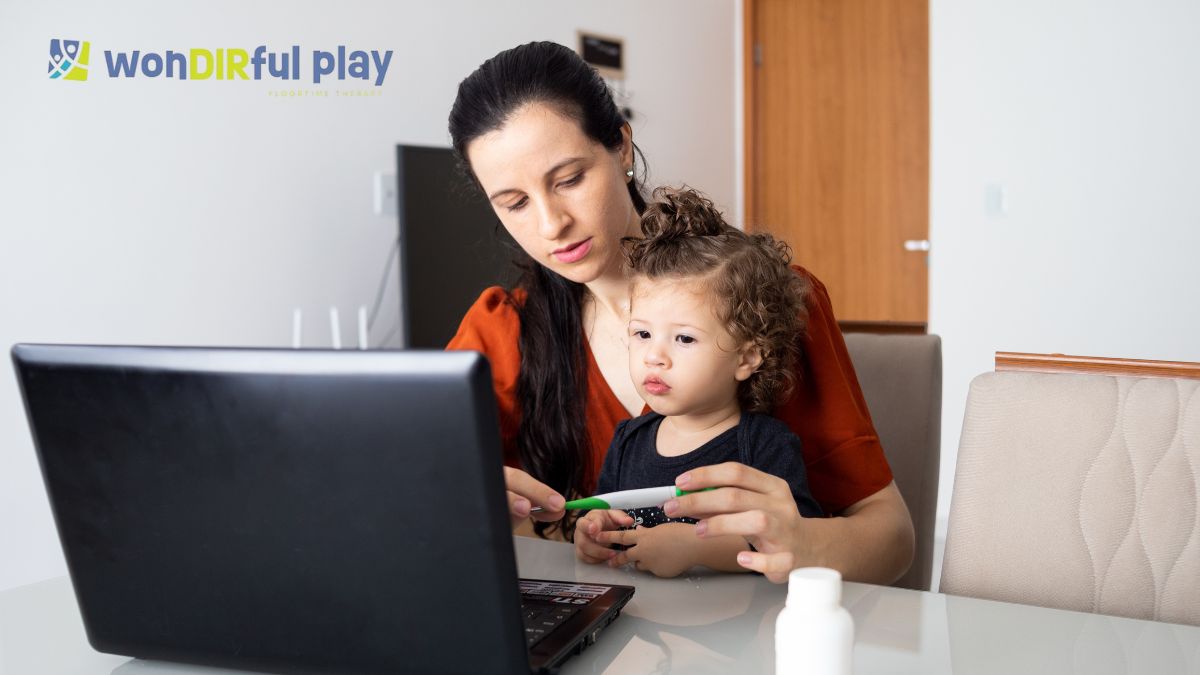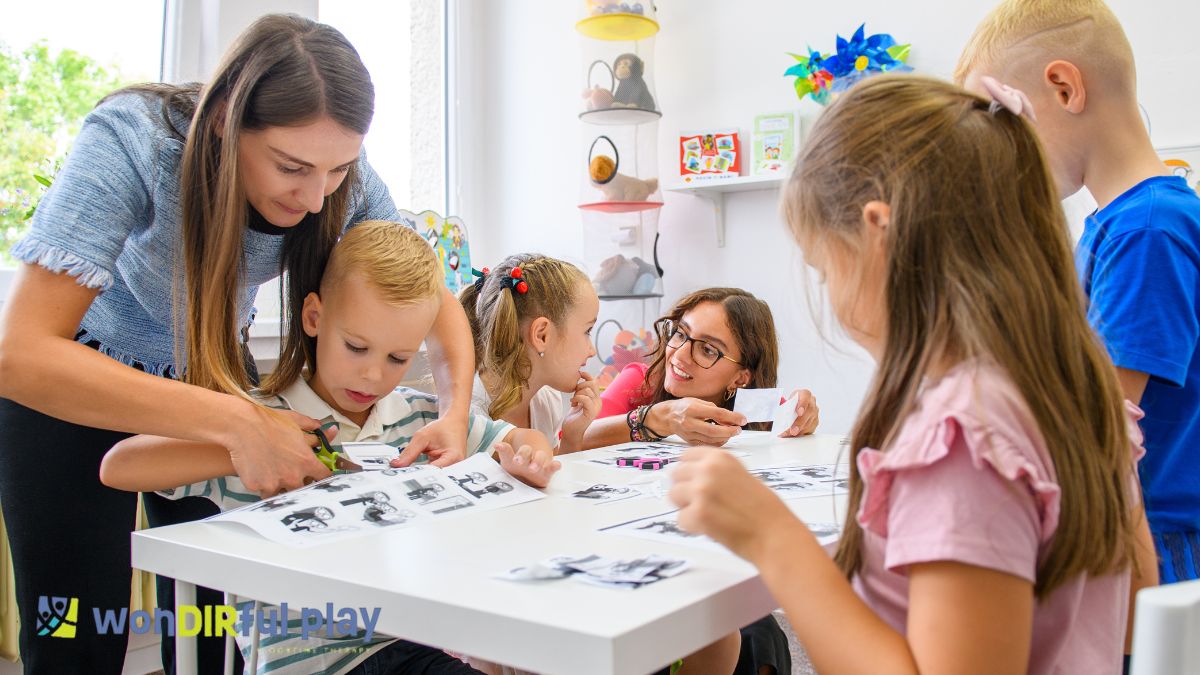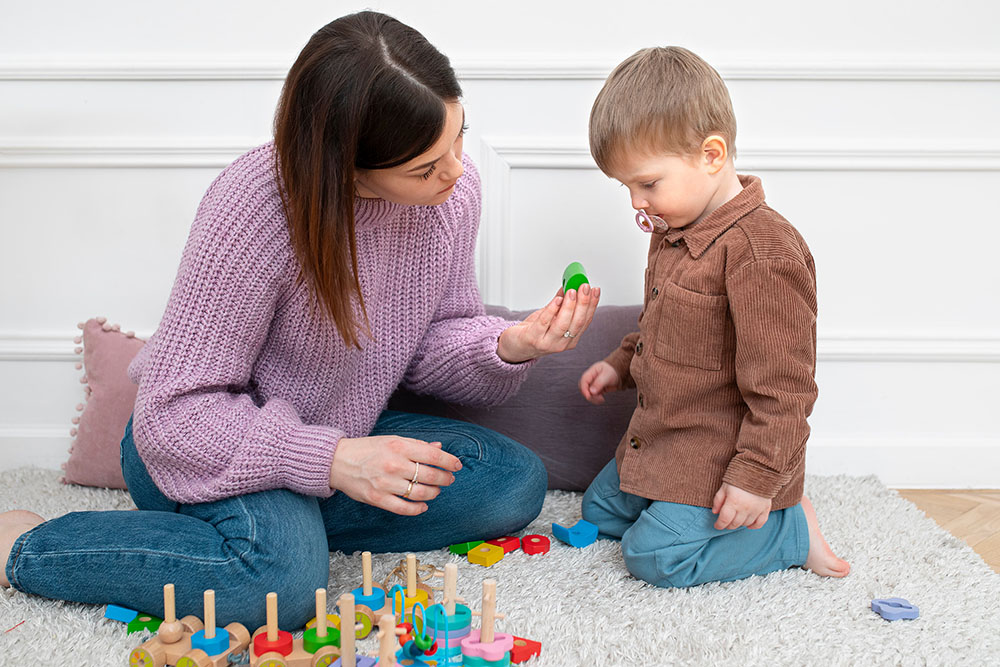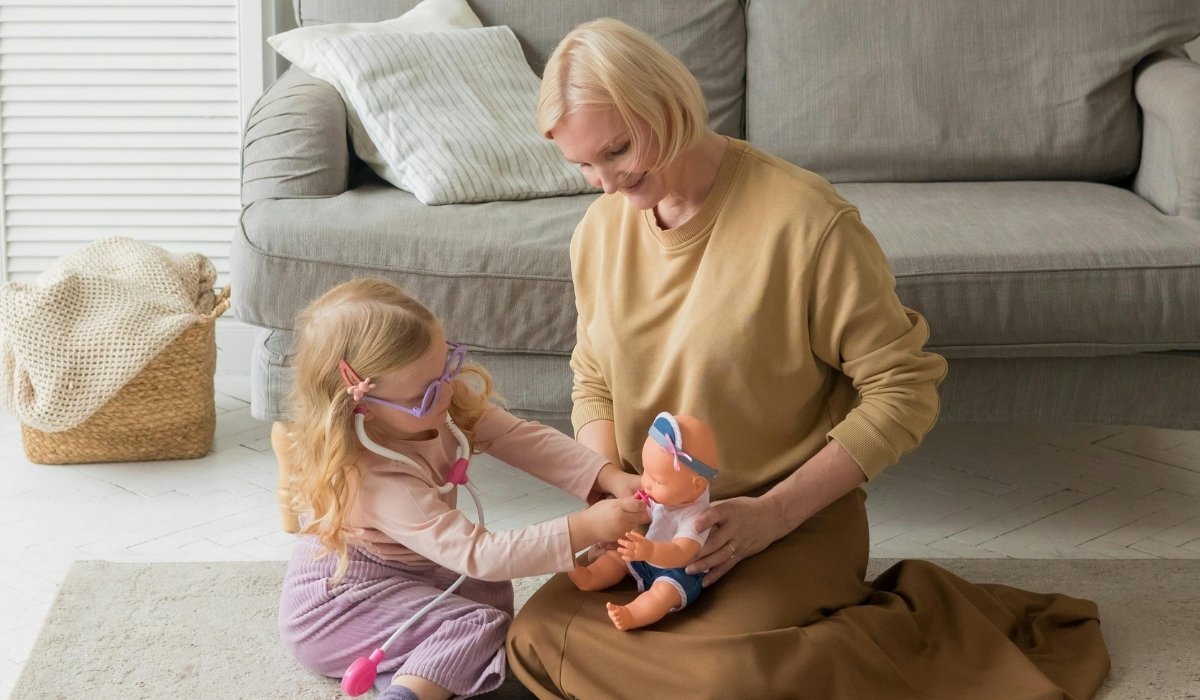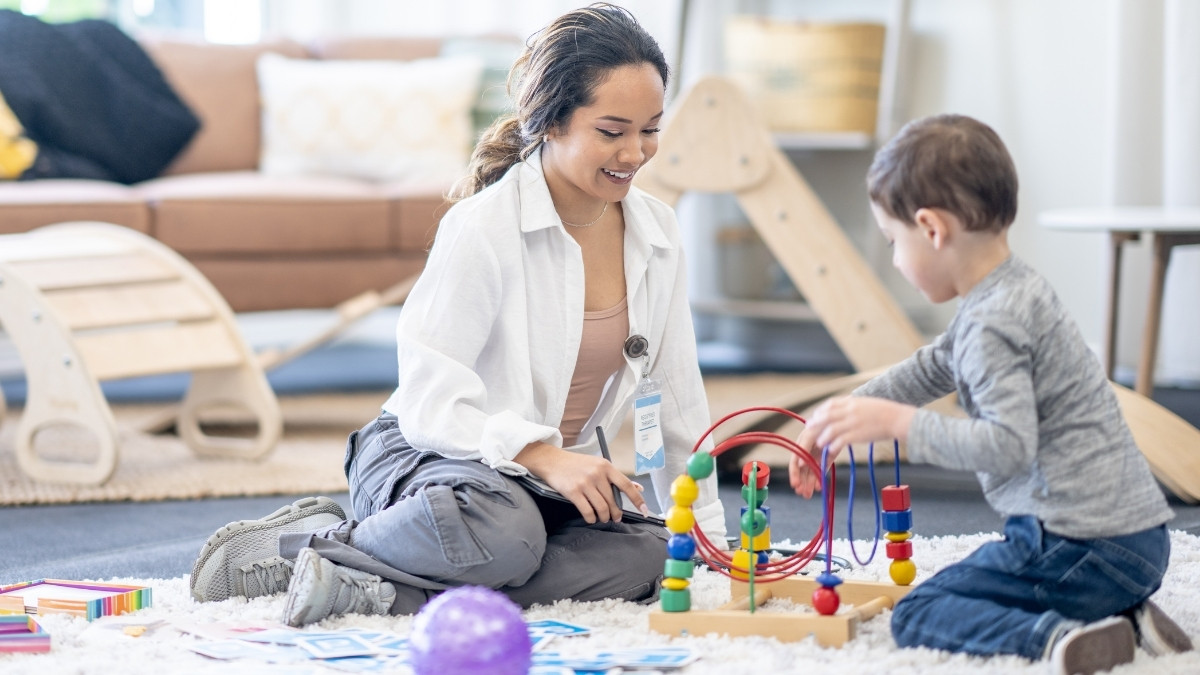Switching to DIR From ABA: What to Expect Month One
October 16, 2025
Switching from ABA to DIR centers relationships through sensory play and engagement. Follow a clear first-month plan that builds calmer, richer interaction.

Key Points:
- Switching from ABA to DIR in the first month shifts focus to co-regulation, spontaneous play, and shared engagement.
- Expect more child-led interaction, flexible routines, and progress measured by circles of communication, not compliance.
- Calmer transitions, longer play, and richer themes signal early success. Structured ABA tools can blend into this relationship-based model.
Many parents feel stuck when ABA goals plateau or when behavior plans run life at home. Switching from ABA to DIR offers a reset that centers connection first. DIR (Developmental, Individual differences, Relationship-based) looks at how your child processes sound, touch, movement, and language, then builds play that fits those needs.
The first month focuses on co-regulation and joyful engagement before skills. Families who want interaction and flexibility constantly search for “Floortime therapy vs ABA,” “DIR and autism,” “DIR therapy for autism,” and other related terms.
Below, we’ll walk you through what the first four weeks look like, what changes at home, and how to tell it is working without waiting many months.
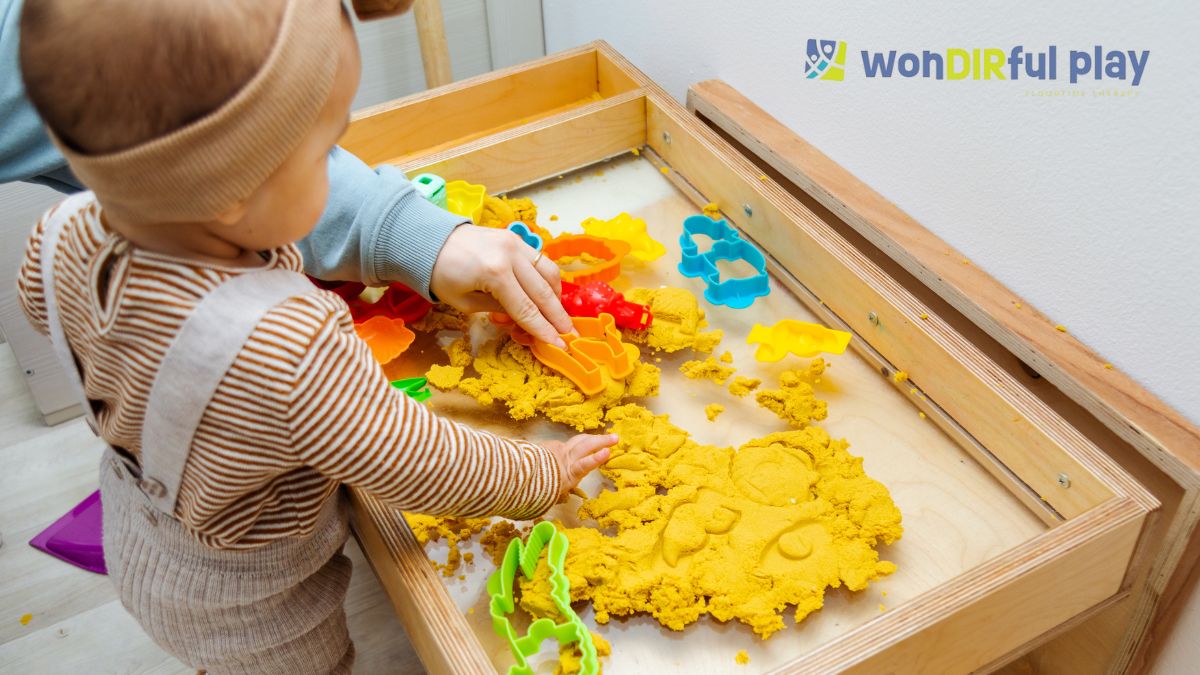
What Changes When You Start DIR/Floortime?
DIR shifts the daily target. ABA often emphasizes discrete trials, prompts, and external reinforcement. DIR/Floortime builds functional emotional development through shared attention, circles of communication, and play. The pace changes, but the work stays steady and structured.
Early differences you will notice:
- Session flow: More face-to-face play and fewer table tasks.
- Goal language: Goals tie to engagement levels, regulation, and flexible play.
- Home role: Parents run many play moments across the day, not only in sessions.
Why this helps in week one:
- Regulation first: Calmer body states open the door to attention and language.
- Child’s lead: Following your child’s interests builds longer and richer play.
- Relationship focus: More circles back and forth train spontaneity and problem solving.
A large parent-mediated DIR-based trial showed strong gains in parent-child interaction with families coached over a year, with parents averaging about 2 hours of daily engagement guided by consultants.
Switching From ABA to DIR: Month-One Roadmap
Switching from ABA to DIR works best with a clear plan. Use a four-week structure that blends clinic visits with coached home play. Each week adds one focus while keeping routines simple.
Week 1. Set Baselines and Co-Regulate
- Observe patterns: Track what calms, what excites, and what derails.
- Start short play bursts: Two or three 5-minute sessions that follow your child’s interests.
- Warm-up routine: Sing, swing, squeeze a ball, or bounce to support sensory processing.
Week 2. Grow Circles of Communication
- Wait and invite: Use a short pause from the DIR Floortime checklist so your child can send a look, sound, or action first.
- Block the easy reach: Place a favored item nearby to invite a gesture or look.
- Match and expand: Mirror your child’s action, then add one simple twist.
Week 3. Build Themes and Problem-Solving
- Create a story: Turn trains, dolls, or snacks into short scripts with a beginning and end.
- Add a playful obstacle: Put the bridge up, hide the spoon, or “forget” the key prop.
- Name feelings: Label calm, excited, and frustrated moments in simple words and use emotion cards.
Week 4. Generalize at Home and Outings
- Change place: Move the same game to the yard or kitchen.
- Change partner: Invite a sibling or grandparent for one round.
- Change prop: Swap the car for a bus or the spoon for a spatula.
Parents often ask about Floortime ABA and DIR vs ABA. The roadmap above helps families see what changes fast, what builds over weeks, and how the home routine fuels gains between visits.
What Goals Should We Expect by the End of Month One?
Set simple, observable goals. Keep each goal tied to engagement and flexibility, not just compliance. Write goals in plain terms that show up in everyday life.
Examples of early goals:
- Co-regulation: Child joins a 3-minute calm warm-up with deep pressure or swinging.
- Engagement: Child stays in shared play for 5 minutes across two settings.
- Communication: Child completes 10 back-and-forth circles during one game.
- Flexibility: Child accepts one playful change in a favorite routine.
How to measure progress:
- Count circles: Pair tally marks with simple scoring tools for DIR/Floortime.
- Time engagement: Note the start and end time for shared play.
- Track recovery: Record how long it takes to return to calm after a challenge.
Context helps set expectations. Intensive ABA programs are often described as 20 to 40 hours per week delivered over years, while parent-coached DIR plans aim for many short interactions spread through daily life.
How Do Sessions and Home Practice Work Together?
DIR sessions look like playful work. A therapist joins your child’s interests, models affect, and coaches you live. You practice in the moment, get feedback, and repeat small wins. At home, short bursts of play add up.
In-session structure:
- Warm-up: Regulate body and attention with music, movement, or deep pressure.
- Join and invite: Follow the child’s lead, then create circles with pause and play.
- Coach and reflect: Try a move, review the effect, and plan the next variant.
Home practice plan:
- Daily micro-sessions: Three to five 5-minute play rounds tied to routines.
- One theme per day: Keep the same story across two settings to grow mastery.
- Short notes: One line on what worked and what needs a tweak.
Families who are switching from ABA to DIR often notice fewer power struggles once routines include a warm-up and a clear end to play. Small, frequent play in the kitchen, hallway, or yard makes practice realistic on busy days.

How Do We Explain DIR to School and Family?
Clear language helps allies support your child. Use simple terms when you describe the plan and the first-month focus.
Explain it this way:
- DIR model autism summary: “We build connection first so thinking and talking grow.”
- Play as work: “Play routines train attention, feelings, and flexible problem-solving.”
- Parent role: “We run short, fun play moments daily and track circles we complete.”
Make support concrete:
- One shared routine: Ask school to run a 3-minute warm-up your child likes.
- One clear goal: Ask for 10 circles during one preferred play every morning.
- One data point: Share a weekly chart of circles and engagement minutes.
Families who ask about DIR model autism and DIR for autism can share this language with teachers and relatives so everyone pulls in the same direction from week one.
How Do We Track Signs That It’s Working?
Look for fast, visible signs that do not require testing. Track three signs during the first month and adjust the plan if one stays flat.
Three early signs:
- More circles: Back-and-forth actions or sounds grow within a play round.
- Calmer resets: Child returns to calm faster after a small change or wait.
- Richer themes: Play shifts from lining or spinning to simple stories with roles.
Simple tools:
- Circle tally card: Five boxes for five rounds each day.
- Regulation timer: Note the seconds to settle after a pause or obstacle.
- Theme ladder: List play themes and put a date when each appears.
Parents comparing Floortime ABA to older routines often see these shifts first at home, then at school or therapy.
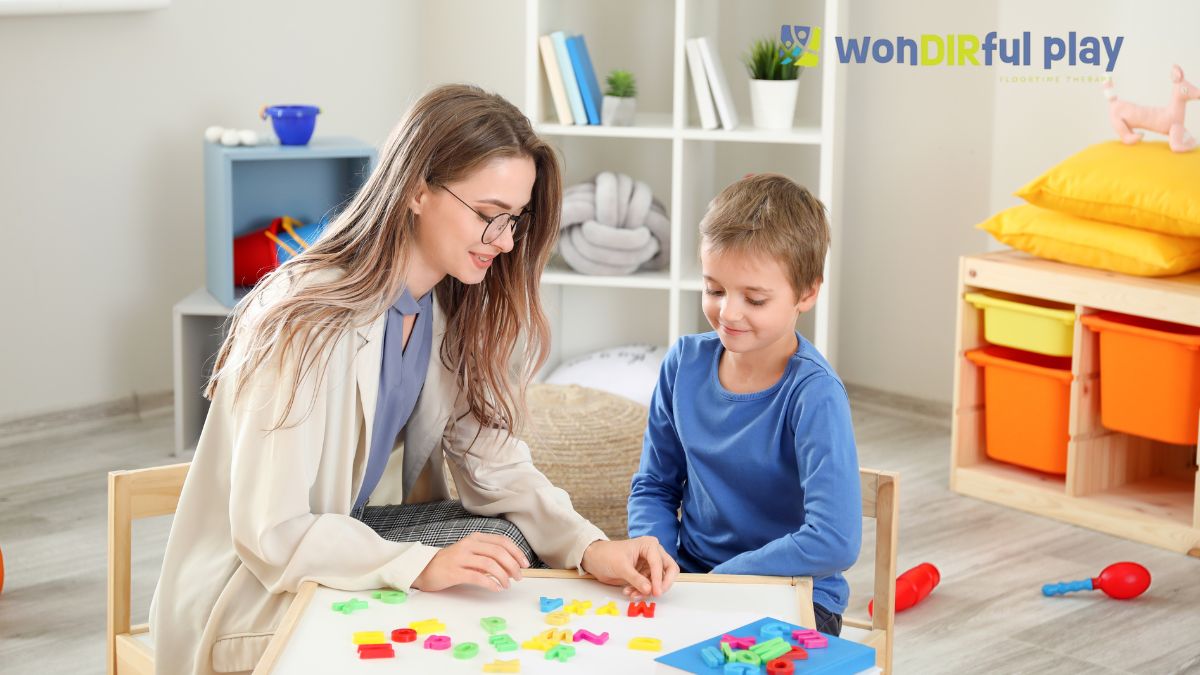
Pros and Cons of DIR Floortime in Month One
Every approach has tradeoffs. Weigh these early so your plan fits real life.
Pros
- Natural practice: Short, frequent play fits daily life across settings.
- Strong parent role: Skills build where your child lives and learns.
- Flexible goals: Targets follow your child’s sensory profile and interests.
Cons
- Time from adults: Daily micro-sessions need attention from caregivers
- Learning curve: Waiting, joining, and pausing take practice.
- Data style: Progress uses circles and engagement measures, not only trials.
Families searching “pros and cons of DIR Floortime” often choose it when home stress rises or when scripted drills stop translating to daily routines.
How Do We Blend Past ABA Wins Into DIR?
Keep what already works. A good plan respects helpful ABA pieces and moves them into playful, flexible formats.
What to keep:
- Clear routines: Keep visual schedules and first-then boards.
- Shaping steps: Keep small steps, but wrap them in playful themes.
- Prompt fading: Keep the plan to reduce prompts, now with longer waits.
How to translate:
- Requesting: Turn “ask for snack” into a kitchen play script with looks and points.
- Imitation: Mirror a sound or action, then add one twist for a new circle.
- Turn-taking: Move from board games to pretend games that change each round.
Searchers who compare DIR vs ABA or Floortime vs ABA key differences can keep past gains while opening room for spontaneous interaction.

How Do We Prepare Siblings and Caregivers?
Involve the village early. Simple rules keep play fun and repeatable across partners.
Three simple rules to share:
- Follow the fun: Join the child’s game before adding one new idea.
- Hold the pause: Count to three before helping.
- End with a win: Close each round on success and a shared smile.
Easy roles for others:
- Sibling helper: Deliver the “missing” prop in the week three story play.
- Grandparent role: Run the same warm-up song each visit.
- Babysitter card: Use the circle tally card and add one note.
These steps help families live the change from day one.
Frequently Asked Questions
Is DIR better than ABA?
DIR is not inherently better than ABA; each fits different needs. DIR supports spontaneous social interaction through relationship-based play, while ABA builds specific skills using structured methods. The best approach depends on your child’s sensory profile, family routines, and past success in generalizing skills. A blended model often yields stronger outcomes.
How to transition out of ABA?
Transition out of ABA by gradually replacing structured trials with relationship-based play, using the same therapists when possible. Shift goals into DIR-style engagement, track home micro-sessions, and measure engagement, regulation, and recovery time over four weeks to decide which ABA elements support spontaneous interaction.
Should I quit ABA therapy?
Do not quit ABA therapy abruptly without clinical guidance. If progress stalls or stress rises, reduce hours gradually and introduce DIR-based play. Retain useful ABA strategies like visual supports and prompts. After one month, reassess using engagement data and regulation trends to guide next steps with your team.
Get Month-One Floortime Gains Started
Families seeking DIR Floortime therapy in New Jersey can start strong with a clear first-month plan, daily micro-sessions, and simple measures of progress. A CDC report estimates 1 in 31 8-year-olds are identified with autism, so more schools and clinics now meet sensory and interaction needs across the day.
WonDIRfulPlay partners with you to set baselines, coach play you can repeat, and balance structure with joy so gains show up outside the clinic. Reach out to schedule a consult and see how a four-week roadmap turns daily moments into steady growth.
Recent articles


-ink.jpeg)

-ink.jpeg)
-ink.jpeg)
-ink.jpeg)
-ink.jpeg)
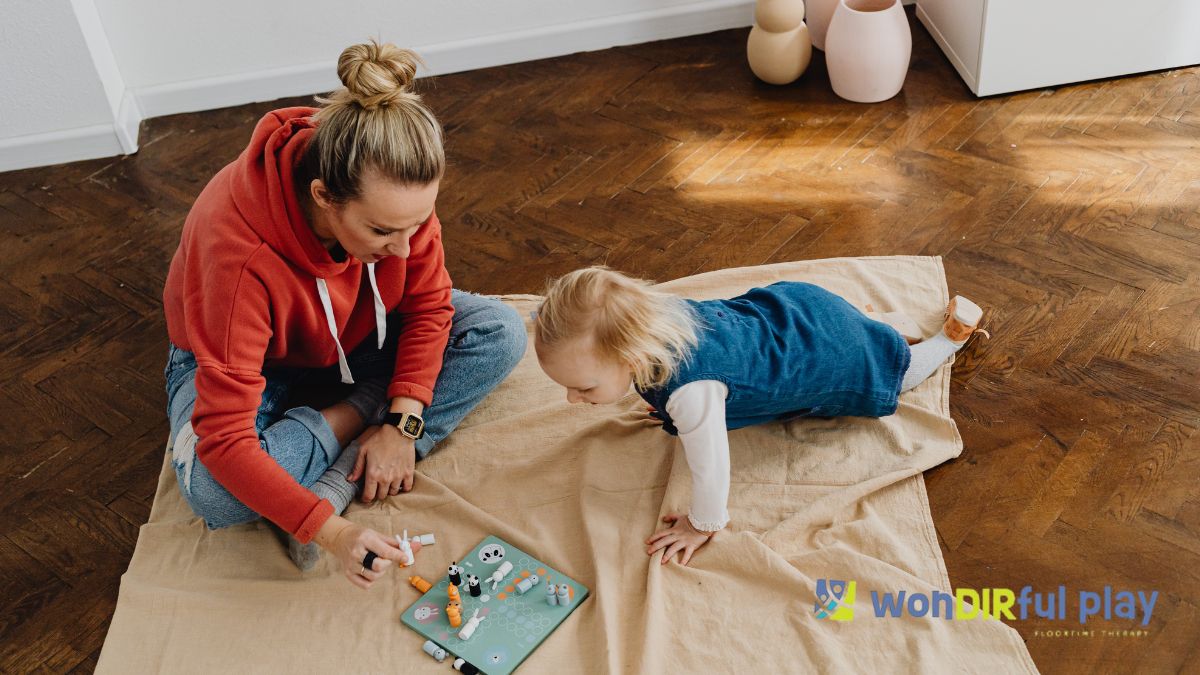
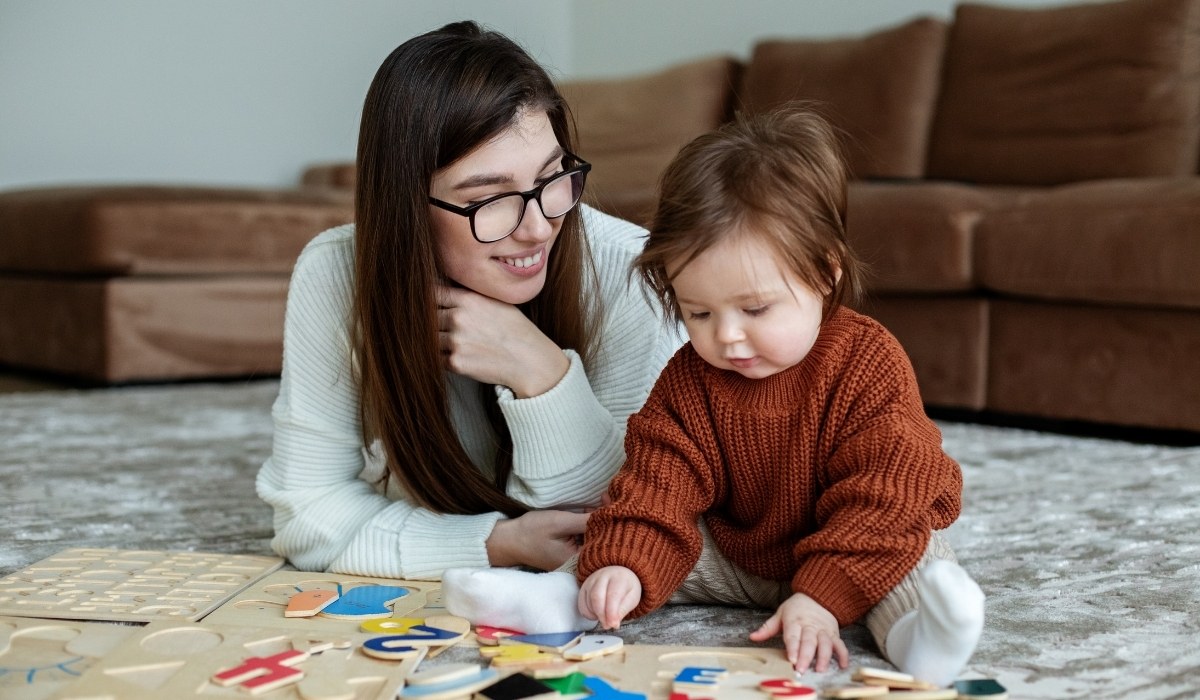
-ink.jpg)
-ink.jpeg)
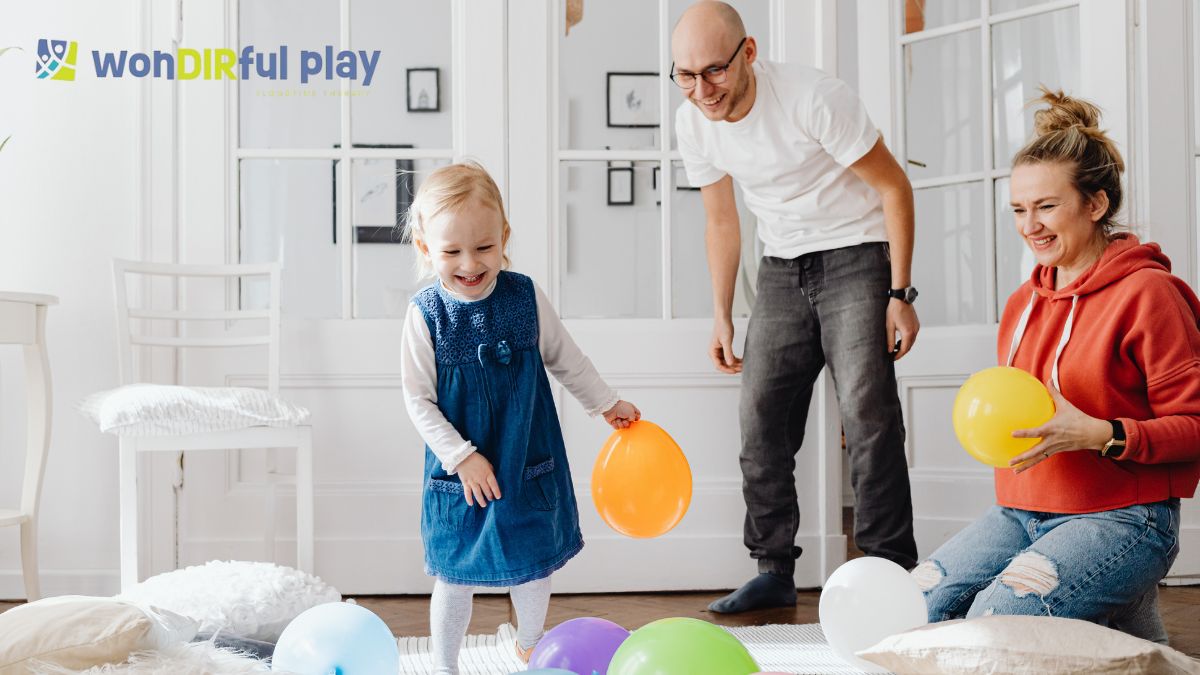
-ink.jpeg)
-ink.jpeg)
-ink.jpeg)
